Swimming pool covers are a must-have for pool owners who want to make their lives easier.
They keep your pool clean when you close it for the winter. Meaning easier cleanup, and less work when it’s time to open your pool.
And while the main purpose of swimming pool covers is to shield your water from debris, that’s not all they do.
Pool covers reduce chemical consumption, decrease water loss, improve heat retention, and allow for more efficient filtration. And that doesn’t include the features unique to each type of pool cover.
So if you’re interested in learning about the different types of pool covers and how to choose the best one, keep reading.
A Guide To Swimming Pool Covers
Types of swimming pool covers
Depending on your reasons for getting a pool cover, certain options may suit you better than others. While some covers are made for providing a simple barrier between the surface and your water, other covers offer impenetrable shielding against unwanted contaminants and a seal so strong that you can walk across it.
So let’s learn more about the different types of pool covers.
Winter Swimming Pool Covers
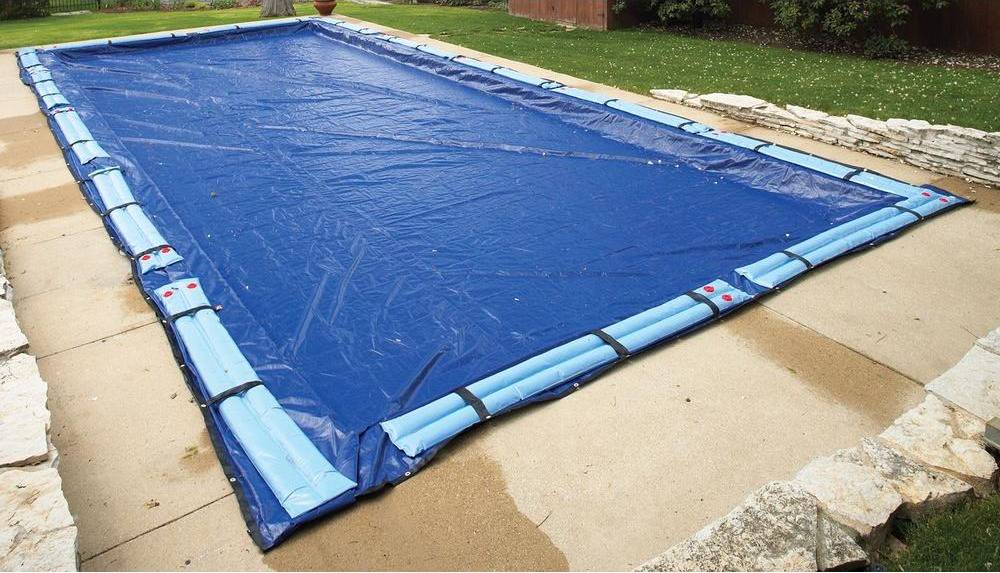


These are the covers that look like giant tarps. They sit on the surface of your pool water and stay secured by a series of water bags.
As far as keeping debris out of your pool is concerned, they’re great. Especially since they’re made of a non-permeable solid material.
That said, winter covers cannot support large amounts of weight. That includes everything from heavy rainfall, to a wandering animal. For this reason, having some kind of fence or enclosure around your pool is a good idea.
As far as maintenance goes, expect to empty out excess water every now and then. For this, use a submersible pump or bucket.
It’s also worth mentioning that winter pool covers are the most affordable pool cover of them all. So if your pool cover budget is limited, winter cover are a great solution.
Benefits of Winter Pool Covers
- Solid material blocks UV rays (good for algae prevention)
- Lowest initial cost
- Easy to install
Disadvantages of Winter Pool Covers
- Shortest lifespan
- Water tubes require bi-yearly replacement
- Can’t support large weight
Cost
$70 – $250
Lifespan
2 – 4 years
Mesh Safety Pool Covers
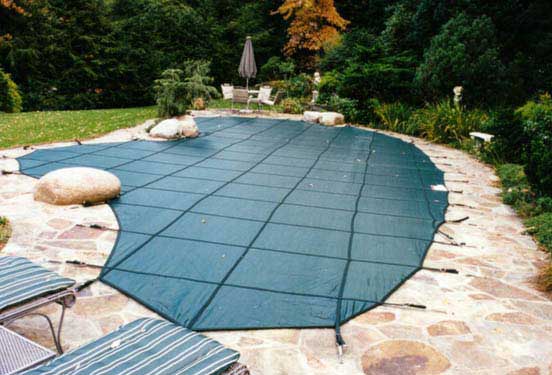


What winter covers lack, mesh safety covers make up for.
They last twice as long, can support large amounts of weight, and stay in place with the help of durable, heavy duty anchors.
And here’s what makes them truly unique:
Just like winter covers, mesh safety covers shield out all of the debris that would otherwise enter your pool. But unlike winter covers, mesh covers allow water and snow to drain through, thanks to their tightly woven fibers.
This eliminates the need to drain, makes cleanup easier, and reduces stress on the cover, prolonging its lifespan.
If you’re looking for a cover you can walk on, this is one of them. But do keep in mind that while some mesh covers can support up to 4,000 pounds, they’re not necessarily designed to be walked on.
So we wouldn’t recommend going as far as hosting a winter party on top of your covered pool. But an occasional stargazing session with a friend, sure why not?
Benefits of mesh safety pool covers
- Most lightweight cover of all
- Traps debris and lets water pass through
- Can support large amounts of weight
Disadvantages of mesh safety pool covers
- More expensive than winter covers
- Require initial safety anchor installation
- Mesh material doesn’t block UV rays
Cost
$300 – $1,400
Lifespan
8 – 16 years
Solid Safety Pool Covers
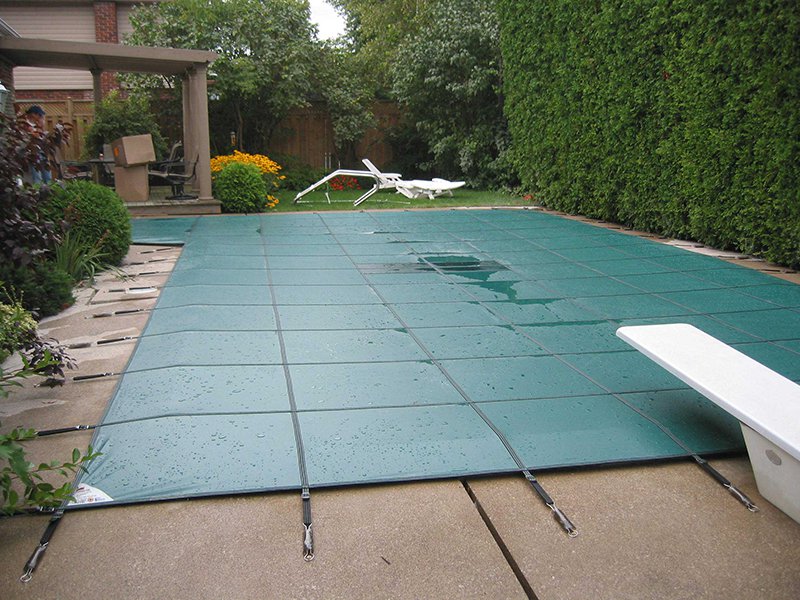


Solid safety pool covers share many similarities with mesh covers, except for one major difference.
The material they’re made from.
Solid safety covers are made from a non-permeable vinyl material, and still have most of the same qualities as mesh covers.
But since the material is non-permeable, water and snow can’t pass through it. So instead, it collects on top.
For this reason, most solid safety covers include a submersible pump. The pump sits at the center of the cover and automatically drains out water.
On the plus side, solid safety covers do provide UV protection and offer great insulation for your water.
Benefits of a solid safety pool cover
- Prevents ultra-fine debris from seeping into the water
- Contains dirty water
- Provides UV protection
Disadvantages of solid safety covers
- Doesn’t last as long as mesh covers
- Sometimes needs to be drained
- Requires initial anchor installation
Cost
$500 – $2,000
Lifespan
6 – 12 years
Hybrid Safety Pool Covers
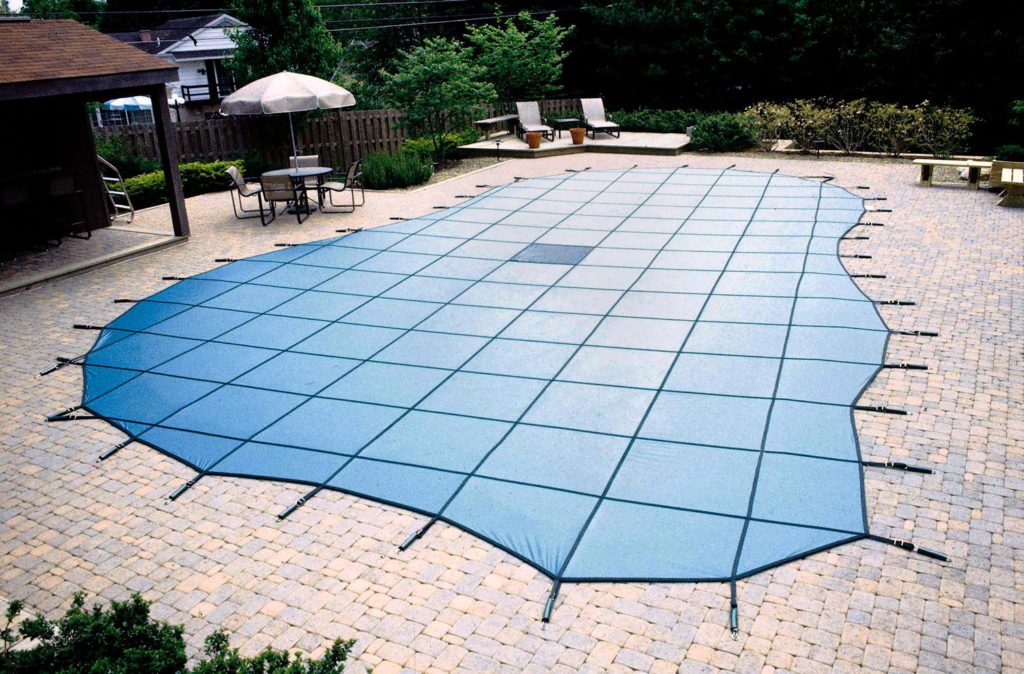


Hybrid covers are a cross between solid and mesh safety covers. So naturally, they offer the best of both options.
A hybrid safety cover combines a series of vinyl patches with a small section of mesh.
This design allows the covers to drain like a mesh cover while blocking out UV rays and finer contaminants like a solid cover. It’s the perfect solution for those torn between the unique features of solid, and mesh covers.
Benefits of Hybrid Safety Pool Covers
- Drains like mesh covers
- Offers sensitive filtration
- UV protection like a solid cover
- Can support large amounts of weight
Disadvantages of Hybrid Safety Pool Covers
- More expensive than solid or mesh covers
- Require initial anchor installation
Cost
$600 – $2,500
Lifespan
8 – 16 years
Automatic Safety Pool Covers
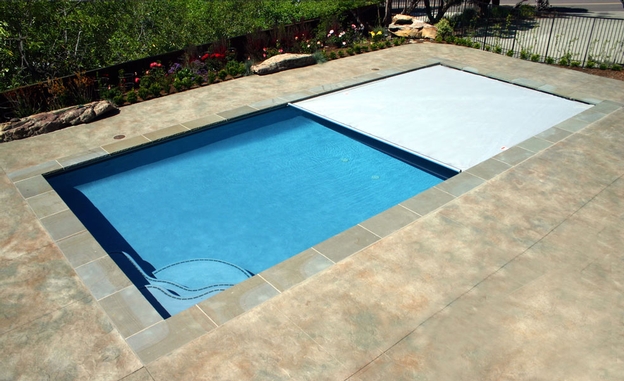


Did you know that mesh, solid, and hybrid safety covers come in automatic forms too?
We saved this one for last because it’s technically a customization option.
Automatic Pool Covers adopt the benefits of whatever material they’re made from. So if you decide on an automatic mesh cover, you’d have easy draining and cleanup.
And naturally, since automatic covers are, automatically deployed, they come with one unique benefit.
Automatic covers are the easiest to apply and remove out of all the covers in this guide. No anchors, no water bags, no lifting.
Just press a button and the cover unrolls. Press it again, and it retracts. All without touching the cover.
Of course, this type of convenience is one you can expect to pay for. While easily the most useful and convenient type of cover, automatic covers incur the highest initial cost. And that’s because they require professional installation.
But hey, it’s a small price to pay for the luxury of swimming pool automation.
Types of Automatic Safety Pool Covers
- On-Deck Track Automatic Safety Cover
- The cover extends along a track on the edges of the pool. Retracts into an on-deck enclosure.
- Recessed Track Automatic Safety Cover
- The cover extends along a hidden track beneath the pool edge. Retracts into a concealed, or on-deck enclosure.
Benefits of automatic safety pool covers
- Automatically deployed and easy to use
- Match the features of whatever material they’re made from
- Most visually appealing and convenient
Disadvantages of automatic safety pool covers
- Most expensive
- Require professional installation
- Difficult to removed
Cost
$600 – $2,500
Lifespan
Depends on material
Related: 11 Simple Ways To Automate Pool Maintenance
Solar Pool Covers
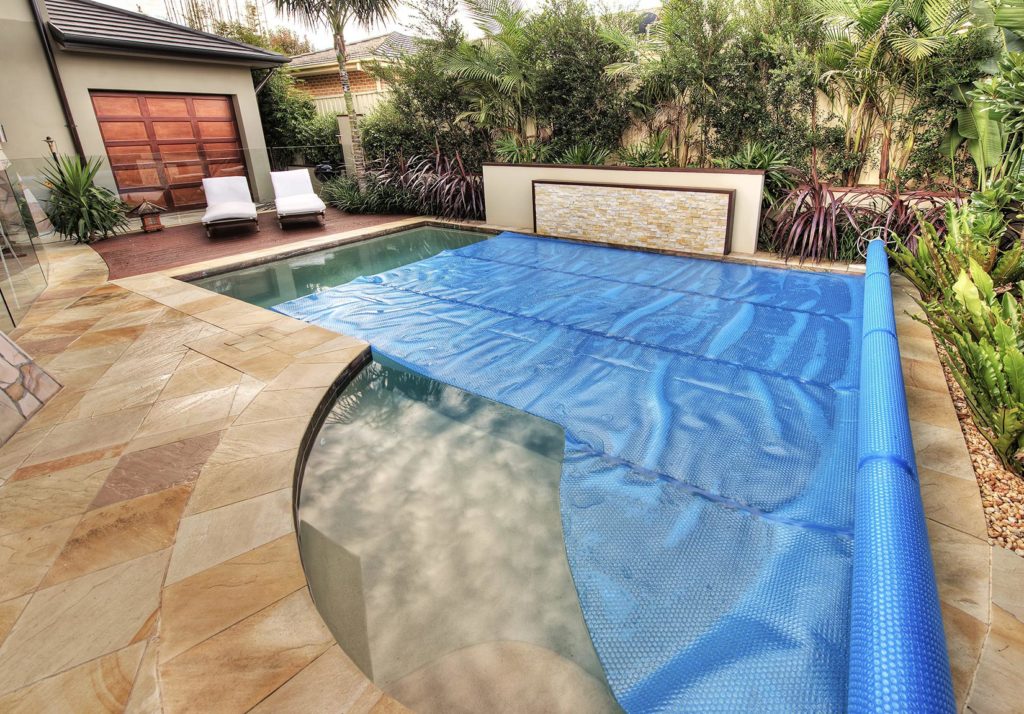


While solar pool covers aren’t typically used for the same reasons as the previously mentioned covers, they’re still worth talking about.
A solar cover’s main function isn’t to “shield” your pool, but rather to insulate it. It does this by creating a barrier that locks in heat and reduces evaporation.
Solar covers are affordable, and perfect for pool owners looking to improve their swimming pool’s heat retention. And just like the other covers, they do a great job of reducing water loss.
That said, solar covers are quite different from other covers for a few reasons:
- They’re easy to apply and remove
- They float on top of your water, unsecured
- Can’t support any weight
Learn more about solar covers in this post.
Deciding which swimming pool covers are best for your inground or above ground pool
With the exception of automatic pool covers, each cover in this guide is available in both inground and above ground pool versions. So as far as deciding which cover is best for your pool, there are just a few questions to consider.
- Do you want to cover your pool, but only have a limited budget?
- A winter cover is a great temporary solution until you’re ready to upgrade.
- Want an easy cleanup come pool season
- Choose a solid cover.
- Looking for a cover that keeps your pool clean AND can be walked on?
- Go with a hybrid cover if it’s in the budget. If not, a mesh cover is a great alternative.
If you liked this post, you might also like:
- The Ultimate Pool Opening Checklist
- 15 Cheap Ways To Upgrade Your Pool
- 7 Cheap Ways To Heat Your Swimming Pool

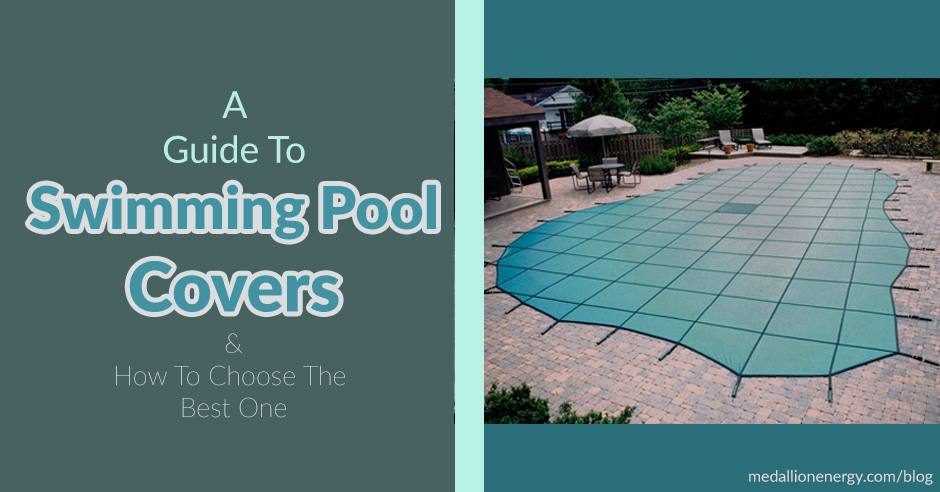

My parents have decided to get the swimming pool covered and asked me to research about our available options. it was great that I came across this article because I learned of all the available swimming pool covers. What got my attention though was the solid swimming pool cover and how it was made from a non-permeable vinyl material that makes it impossible for the water and snow to pass through. I am sure that my parents will not mind if debris collects on top just not in the water. I will suggest this to them. Thank you.
Hey, Tammy. Thanks for your comment. Glad you found the content helpful. A solid vinyl cover is a great choice, just expect a little bit of cleanup now and then.